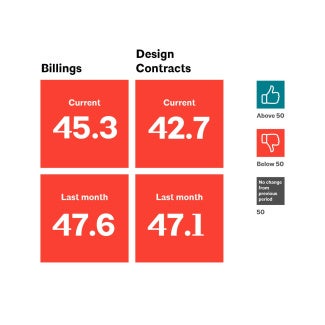Reducing risk after a terminated owner-architect agreement
An owner can terminate an owner-architect agreement at will. Explore how you can specify copyright protection of your design documents and reduce your risk after an owner-architect agreement is terminated.

Owner-architect agreements
Many owner-proposed owner-architect agreements—and indeed, the standard AIA owner-architect agreements—permit the owner to terminate the agreement at will or for the owner’s convenience, meaning the owner may terminate the agreement even if the architect has not breached it. From the owner’s perspective, these termination provisions are quite sensible for several reasons, not least of which is the owner not wanting to remain contractually committed to the architect, should the owner either abandon the project or become disenchanted with its architect.
From the architect’s perspective, there are concerns. Regardless of whether the agreement transfers copyright of the architect’s documents to the owner or otherwise permits the owner to use the documents either in connection with the completion of the project or for any other purpose, it must be recognized that the owner will now be using the architect’s documents without the further participation of the architect following such a termination. This increases the risk of claims being asserted against the architect, alleging that the documents are not complete or contain errors or omissions. Also, alterations to the documents by the owner or others may result in similar claims against the architect by others.
Therefore, in all cases where the owner terminates the agreement for its convenience, the owner-architect agreement should clarify that:
- The architect and its consultants will not be responsible for alterations made in or to the documents by anyone other than the architect or its consultants, or for the use or adaptation of the documents by the owner or others without the participation of the architect and its consultants as provided for in the agreement.
- Any adaptation, alteration, reproduction, or use by the owner or others will be at the owner's sole risk and expense and without liability to the architect and its consultants.
- Except to the extent prohibited by applicable law, the owner will, before each instance of reproducing or physically transferring the documents to others, remove the architect's name, logo, and other distinguishing marks, and those of the architect's consultants.
- To the fullest extent permitted by law, the owner will release, hold harmless, and will indemnify the architect and its consultants and will defend the architect and its consultants using counsel satisfactory to the architect, from and against all claims, liabilities, losses, damages, judgments, awards, and costs including, but not limited to, court costs and attorneys' fees, arising from, related to, or in any manner in connection with the owner's or others' use, adaptation, alteration, reproduction, or transfer of the documents.
Regarding clause (1), Section 7.3.1 of the AIA standard B101 and B103 agreements includes an excellent release, hold harmless, and indemnification provision. Clauses 1–3 provide greater clarity and added protection to the architect, particularly in situations where copyright may have been transferred by the architect to the owner. Regarding clause (3), it should be noted that some state architectural boards prohibit anyone from removing a design professional’s signature and seal from their design documents once applied.
In all such cases of termination for convenience, it’s bad enough that the architect does not get to finish its services in connection with the project. The architect shouldn’t also face the added risk of possibly incurring claims alleging defects in its documents. The additional risk of the terminated architect’s construction documents being used when the designing architect is not providing construction administration services is another added risk. Including as many of these suggestions as possible will help reduce that risk.
AIA has provided this article for general informational purposes only. The information provided is not legal opinion or legal advice. The Risk Management Program posts new materials and resources periodically.



